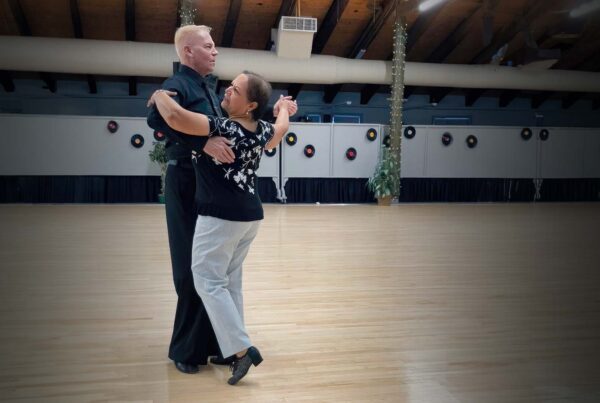When I was still an amateur competitor, I constantly wondered what the judges were looking for. Wendy and I would eagerly listen for feedback and insight from adjudicators following a competition to try and understand why they would mark us a certain way in relation to other couples.
Most competitors wonder what it is that judges see or don’t see. This is especially an issue when they see themselves marked lower than couples who might have worse technique or less experience. They agonize over why a judge would place them well back from a couple that, in their eyes, can’t possibly be as good.
I soon came to the conclusion that judges see everything, and at that point I began to really understand and respect the entire competitive process. The dancers are there to see if they are progressing. Being judged is the best way to measure that progress. Everyone works hard (well, most competitors do), so the playing field can shift from event to event based on who has been training harder than someone else. You might have a bad day, or an especially good day. The other couples on the floor might have a worse day than you. But it all boils down to one simple fact: the judges see a thousand details that the competitors may not even be aware of. Now that I’ve been teaching for a few years I’m beginning to see things I never thought about as an amateur competitor, and that’s only a fraction of the detail a more experienced teacher or judge would see.
There are many elements in judging. It’s not just the technique or presentation of the couple. Different judges have different criteria that they are looking for, but in general it can be summed up as “which couple is more beautiful on the floor?” This includes how they work together, the story they are telling with their choreography and execution, their musicality, their confidence, physical appearance, posture and much more.
Recently I came across an article that included some insights from top American adjudicators on what they look for as judges. The article was primarily focused on Pro/Am competition, but the principles apply to all couples, not just a teacher dancing with a student. Here are some highlights:
Carolina Orlovsky
Carolina, a World Mambo Champion and World American Rhythm Show Dance Champion, says that she really looks for self confidence and an inner spirit that says the competitor is serious about the craft. She says, “Even the most gifted of us have to do the work… to reach their full potential.” She wants to see that the couple has been preparing and putting in the training effort. She also values awareness of body tone, vertical alignment, frame, foot and ankle pressure which show an understanding of weight distribution, and a knowledge of timing and space on the floor.
Melissa Dexter
Melissa is a US Latin Champion and a finalist at the world level. For her, the most important thing she wants to see is clarity. She believes the body is an instrument of communication so you have to get your idea across. If you don’t have a story, then you have nothing to communicate, just like a speaker who rambles would not connect with his audience.
Corky Ballas
A 10-time undefeated US Latin Champion, Corky looks for entertainment value, connection, technique and appearance. But he also says that stamina matters. If you have all the above but no stamina, you still get last place. That means having energy to spare by the end of the Jive or Quickstep.
Teresa Shiry
Teresa is a US Smooth Champion and World Showdance Finalist. She looks for musicality, an understanding of the characteristic of the dance, posture and frame, lead/follow, showmanship and grooming. And she believes these elements are important at all levels from Gold up. It means being polished as a dancer, with a good discipline of practice and attention to detail.
Mary Murphy
Mary is well known to North Americans because of her long-time appearance as a judge on the TV show “So You Think You Can Dance.” She puts performance at the top of her list. That is a combination of chemistry between the partners, their connection to each other and the audience and even to the judges. She wants to know that while you dance you are connected to the floor and are expressing a love of dancing. Also important to her are timing. Finally, she says that it is easier to perform brilliantly when you have good technique so that becomes a foundation for everything else.
Elena Grinenko
Elena was one of the professionals in the first few seasons of Dancing With the Stars. She looks for musicality, balance, technique and styling (appearance). Layered on top of that, what makes the difference when couples have those four elements is the art of their choreography and the story it is expressing.
Wendy Johnson
Wendy is a well-known ballroom champion and frequent judge at events around the world. She says that grooming is the first thing a judge sees, so it is important to have your appearance together and polished. After that comes musicality. If you aren’t dancing in time to the music, there is nothing to judge so that will place you behind everyone else. Then comes technical skills, followed by choreography and expression that show you understand the character of the dance. If the dance is flirtatious, you should be flirtatious. If elegant, you should express elegance. Connection with your partner is important. She doesn’t like it when a dancer is unaware of their partner during a dance. Wendy also feels that confidence is attractive but arrogance is not, so be careful with your expression of self-confidence; it could be taken the wrong way.













